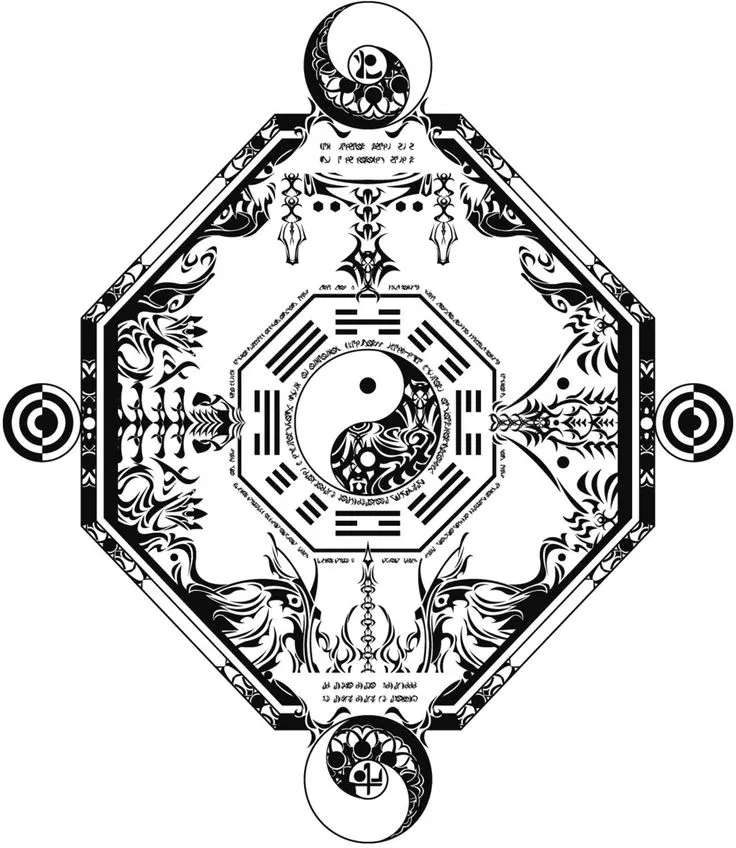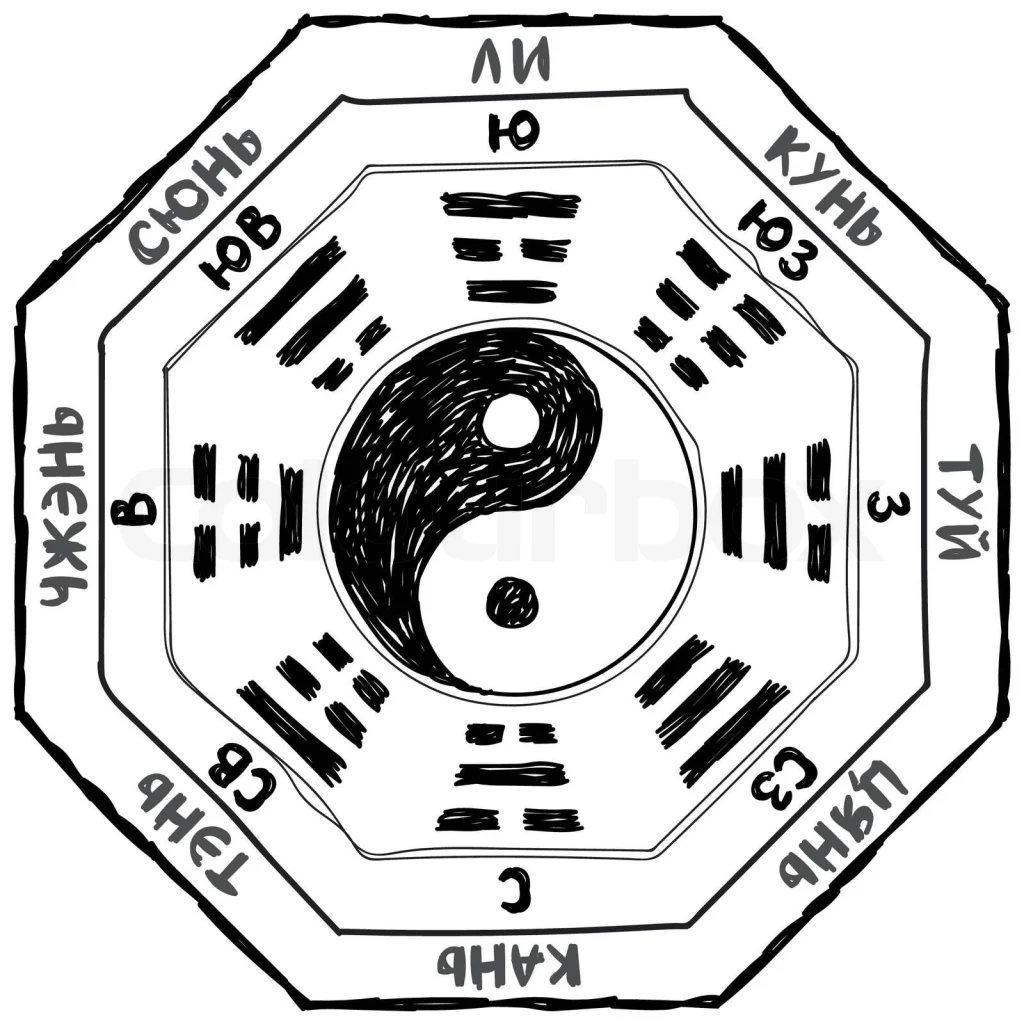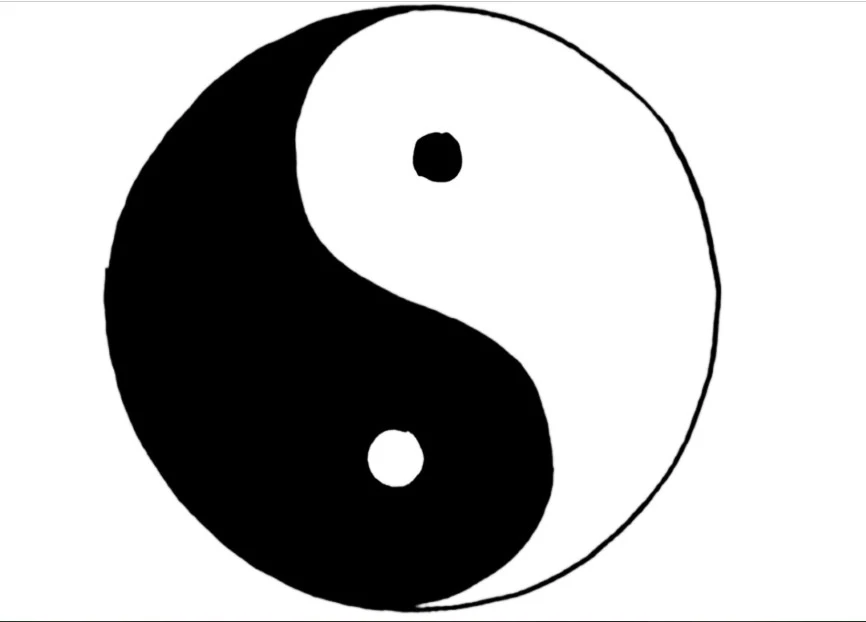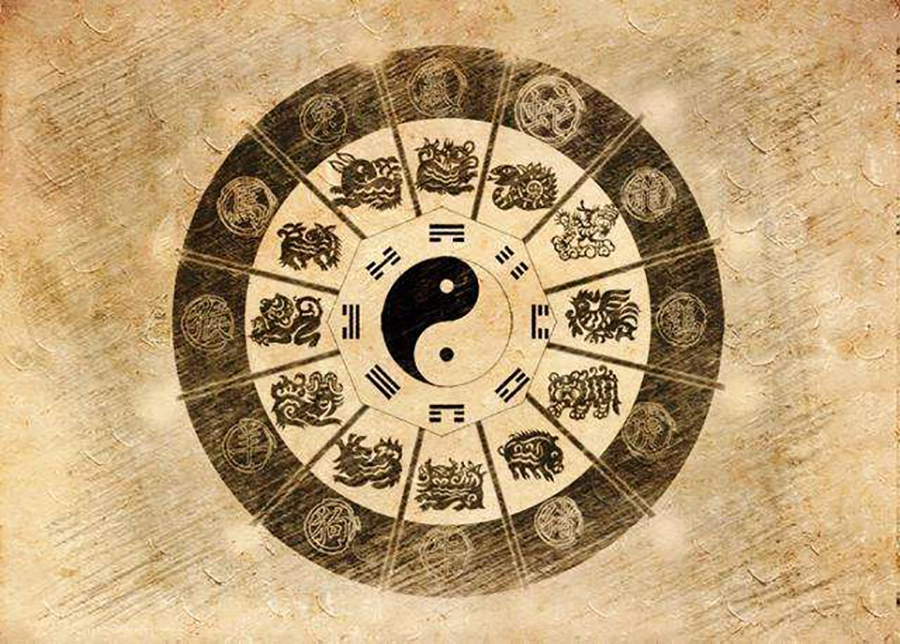One symbol that resonates with a sense of tranquility, balance, and harmony is the Chinese peace symbol. Rooted in ancient Chinese culture and philosophy, this symbol represents more than just the absence of conflict; it embodies a holistic way of living and interacting with the world. In this article, we delve into the origins, cultural significance, and contemporary relevance of the Chinese peace symbol.
Origins of the Chinese Peace Symbol
The origins of the Chinese peace symbol are deeply intertwined with ancient Chinese philosophy and cosmology. At the heart of this symbol is the concept of Yin and Yang, which is a foundational principle in Taoism. The Yin-Yang symbol visually represents the relationship between these two opposing but complementary forces and is often associated with harmony, balance, and the cyclical nature of existence.
- Taoism and Yin-Yang Philosophy: Taoism, one of the major philosophical and religious traditions in China, places great emphasis on the concept of “Tao” (often translated as “the Way”) as the fundamental principle of the universe. Within Taoism, the Yin-Yang philosophy holds that the universe is composed of interconnected dualities, such as light and dark, hot and cold, and so on. These dualities are in a constant state of dynamic balance and change, and the interaction between Yin and Yang energies gives rise to all phenomena.
- Yin and Yang: The terms “Yin” and “Yang” are used to describe these dual forces. Yin is associated with qualities such as darkness, passivity, receptivity, femininity, and coldness. Yang, on the other hand, is linked to qualities like light, activity, assertiveness, masculinity, and warmth. It’s important to note that Yin and Yang are not absolute, fixed categories, but rather relative and interdependent aspects that exist in relation to each other.
- Symbolic Representation: The Yin-Yang symbol visually represents the harmony between Yin and Yang. The circular shape suggests the cyclical nature of change, with a small circle of Yin within Yang and a small circle of Yang within Yin, indicating the presence of each within the other. The curved line dividing the two halves further emphasizes their interconnectedness, as well as the fact that nothing is purely Yin or purely Yang.
- Cosmic Harmony and Balance: The Yin-Yang philosophy extends beyond the realms of nature and into the human experience. It provides a framework for understanding the dynamic balance required for harmonious living and interaction with the world. In Chinese thought, health, social order, and even political governance are believed to be achieved through the harmonization of opposing forces, much like the interplay of Yin and Yang.
- Influence on Chinese Culture: The Yin-Yang symbol has left an indelible mark on Chinese culture, influencing various aspects such as traditional Chinese medicine, martial arts, feng shui, and art. In traditional Chinese medicine, health is thought to result from the balance of Yin and Yang energies within the body. Feng shui employs Yin-Yang principles to harmonize spaces and enhance energy flow. In martial arts, practitioners seek to balance the opposing forces of strength and flexibility, aligning with the Yin-Yang philosophy.


The Chinese peace symbol, represented by the Yin-Yang symbol, has its origins deeply rooted in Taoist philosophy and the concept of Yin and Yang. This symbol encapsulates the profound understanding of harmony, balance, and interconnectedness that has been central to Chinese thought for centuries. It continues to inspire individuals around the world with its timeless wisdom and relevance in fostering a holistic approach to life and relationships.
What is the peace symbol in China?
The meaning and philosophy behind the Chinese peace symbol its not like other Witch Symbols or Wicaan symbols, often represented by the Yin-Yang symbol, and encompass profound concepts rooted in ancient Chinese thought, particularly within Taoism. This philosophy offers insights into the nature of existence, the dynamics of balance, and the interconnectedness of all things. Here’s a deeper exploration of the meaning and philosophy associated with the Chinese peace symbol:
- Harmony in Duality: The Chinese peace symbol represents the fundamental duality of existence. It illustrates the interconnected relationship between opposing forces, highlighting the idea that these forces are not in conflict but rather complementary aspects of a unified whole. This principle emphasizes that harmony and balance can be achieved by recognizing and embracing the coexistence of seemingly contradictory elements.
- Dynamic Balance: The symbol portrays a sense of dynamic equilibrium. Just as day transitions into night and back again, and the seasons cycle through their changes, the interaction between Yin and Yang is in constant flux. This concept of dynamic balance underscores the impermanent nature of all things and the need to adapt and adjust in response to changing circumstances.
- Interdependence: The chinese peace symbol philosophy emphasizes the mutual dependence of Yin and Yang. Each aspect contains the seed of the other within it, signifying that nothing is ever entirely one way or the other. This interdependence extends beyond dualities in nature to encompass relationships, society, and all aspects of life.
- Holistic Understanding: At its core, the philosophy encourages a holistic understanding of the world. It invites individuals to view situations from multiple perspectives and to recognize the broader context in which events occur. This approach encourages a more balanced and nuanced assessment of situations.
- Natural Rhythms: The Chinese peace symbol is closely tied to the cycles found in nature. These cycles reflect the interplay between growth and decline, birth and death, activity and rest. By aligning with these natural rhythms, individuals can better navigate life’s challenges and opportunities.
- Application to Life: The principles of Yin and Yang extend beyond abstract philosophy to practical aspects of life. In relationships, the philosophy suggests that understanding and accepting differences can lead to more harmonious interactions. In health, it underscores the importance of balance in one’s lifestyle and well-being.
- Unity of Opposites: The chinese peace symbol symbol embodies the idea that opposites are not inherently separate but are part of a unified whole. This concept challenges dualistic thinking and encourages a more inclusive approach that acknowledges the interconnectedness of all things.
- Evolving Understanding: The philosophy of Yin and Yang encourages an evolving and open-minded understanding of the world. As individuals delve deeper into the dynamics of dualities, they discover that each side contains elements of the other, leading to a more enriched perspective.


The meaning and philosophy of the Chinese peace symbol revolve around the idea that balance, harmony, and interconnectedness are fundamental to existence. This perspective offers valuable insights into how individuals can navigate life’s complexities, embrace diversity, and foster a sense of unity within themselves, their relationships, and the broader world.
Cultural Significance
The cultural significance of the Chinese peace symbol, represented by the Yin-Yang symbol, is deeply embedded in various aspects of Chinese culture and has had a lasting impact on different domains, including philosophy, medicine, art, and daily life. Here’s a closer look at the cultural significance of this symbol:
- Traditional Chinese Medicine: The concept of Yin and Yang is foundational in traditional Chinese medicine (TCM). According to TCM principles, the body’s health depends on the balance of Yin and Yang energies. Imbalances between these forces are believed to lead to illness, and treatments aim to restore harmony by addressing these imbalances. TCM practitioners diagnose and prescribe treatments based on their understanding of how Yin and Yang interact within the body.
- Feng Shui: The principles of the chinese peace symbol are integral to the practice of feng shui, an ancient Chinese system of arranging environments to optimize the flow of energy, or “qi.” Practitioners of feng shui use Yin-Yang concepts to create harmonious and balanced spaces that promote well-being and positive energy flow. The arrangement of furniture, colors, and elements within a space is guided by the interplay of Yin and Yang energies.
- Martial Arts and Philosophy: Many Chinese martial arts (kung fu) incorporate the philosophy of Yin and Yang. Practitioners seek to balance opposing forces within themselves, aiming for a harmonious integration of strength and flexibility, force and fluidity. This philosophy extends to the mental and spiritual aspects of martial arts, promoting inner peace and self-awareness.
- Art and Aesthetics: The chinese peace symbol’s elegant and balanced design has made it a common motif in traditional Chinese art. It is often depicted in various forms, including calligraphy, painting, and sculpture. Its presence in art serves as a reminder of the importance of harmony and equilibrium in creative expression and the broader world.
- Culinary and Dietary Practices: The Yin-Yang philosophy has influenced Chinese culinary traditions as well. Traditional Chinese cuisine emphasizes the balance of flavors, textures, and temperatures in dishes. Foods are often categorized as Yin (cooling) or Yang (warming), and meals are planned to achieve a harmonious balance between these qualities.
- Cosmology and Worldview: The Yin-Yang philosophy has also shaped Chinese cosmology and the way people view the world. It encourages an understanding of the interconnectedness of all things and the cyclical nature of existence. This worldview has influenced Chinese perspectives on time, nature, and the human experience.
- Language and Symbolism: The chinese peace symbol itself serves as a visual representation of the cultural values it embodies. Its circular shape and interlocking halves reflect the concept of harmony within duality. The symbol’s universal appeal has allowed it to transcend cultural boundaries, making it recognizable and appreciated around the world.
- Ethics and Behavior: The Yin-Yang philosophy has implications for ethical behavior and social interactions. It encourages individuals to consider the consequences of their actions within the broader context of balance and harmony. This perspective can guide decision-making and promote cooperation and understanding.
In summary, the cultural significance of the Chinese peace symbol goes beyond aesthetics and philosophy; it permeates various aspects of Chinese culture, informing practices related to health, design, art, ethics, and more. The chinese peace symbol continues to inspire individuals to seek balance, embrace diversity, and cultivate harmony in their lives and interactions.


Contemporary Relevance Of the Chinese Peace Symbol
The contemporary relevance of the Chinese peace symbol, represented by the Yin-Yang symbol, is profound and far-reaching, extending beyond cultural boundaries. In a rapidly changing and interconnected world, the principles embodied in this symbol continue to hold significant meaning and offer valuable insights into various aspects of modern life.
Here’s a deeper exploration of the symbol’s contemporary relevance:
- Global Cooperation and Diplomacy: The philosophy of Yin and Yang emphasizes the importance of balance and collaboration. In a world facing complex global challenges such as climate change, pandemics, and political tensions, the symbol serves as a reminder that finding common ground and working together are crucial for achieving collective goals and fostering peace.
- Environmental Sustainability: The Yin-Yang philosophy encourages individuals and societies to recognize the delicate balance between humanity and the natural world. This perspective is highly relevant to discussions surrounding environmental sustainability, prompting us to seek harmony with the planet and adopt practices that respect the interconnectedness of ecosystems.
- Wellness and Mindfulness: The fast-paced nature of modern life often leads to stress and imbalance. The Yin-Yang philosophy advocates for a holistic approach to well-being, encouraging practices that promote physical, mental, and emotional equilibrium. Concepts like work-life balance and mindfulness align with the symbol’s teachings on harmony.
- Inclusivity and Diversity: The idea that opposing forces can coexist in harmony carries important implications for embracing diversity and fostering inclusive societies. The chinese peace symbol philosophy encourages individuals to respect and appreciate different perspectives, contributing to greater understanding and social cohesion.
- Ethical Decision-Making: In a world of complex ethical dilemmas, the symbol encourages individuals to consider the broader consequences of their actions. It serves as a guide for ethical decision-making, prompting individuals to choose paths that align with a sense of balance, fairness, and harmony.
- Holistic Healthcare: The Yin-Yang philosophy has inspired a more holistic approach to healthcare, with an increasing focus on integrative medicine that combines conventional and complementary therapies. This approach recognizes the interconnectedness of physical, emotional, and spiritual well-being.
- Conflict Resolution: The principles of Yin and Yang offer insights into conflict resolution. By recognizing the interdependence of opposing forces, individuals and groups can approach disagreements with a mindset that seeks compromise and understanding, ultimately leading to more peaceful resolutions.
- Personal Growth and Development: The Yin-Yang philosophy encourages personal growth through self-awareness and self-acceptance. Embracing both strengths and weaknesses and striving for a balanced life can contribute to enhanced overall well-being.
- Technological Balance: As technology shapes our lives, the symbol’s message of balance can be applied to our relationship with digital tools. Striking a balance between online and offline experiences can lead to healthier and more fulfilling lifestyles.
- Leadership and Governance: The symbol’s emphasis on balance and collaboration has implications for effective leadership and governance. Leaders who embrace these principles are more likely to foster inclusive decision-making and sustainable policies.
In conclusion, the contemporary relevance of the Chinese peace symbol, embodied by the Yin-Yang philosophy, extends to various aspects of modern life. Its teachings on balance, harmony, and interconnectedness provide valuable guidance for addressing global challenges, promoting well-being, and fostering positive interactions in an increasingly interconnected world.


How to Incorporate The Principles of The Chinese Peace Symbol Into Your Life
Incorporating the principles of the chinese peace symbol into daily life can bring about a sense of balance, harmony, and well-being. Here are some practical ways individuals can embrace these principles:
- Cultivate Self-Awareness:
Begin by cultivating self-awareness and recognizing the various aspects of your life that represent Yin and Yang. Take time to reflect on your daily routines, habits, and activities. Observe which elements bring stillness, introspection, and relaxation (Yin), and which bring action, energy, and stimulation (Yang). By understanding this balance, you can make conscious choices that promote harmony. - Embrace Balance in Work and Rest:
Strive to maintain a healthy balance between work and rest. Recognize the importance of both active engagement (Yang) and rejuvenation (Yin). Incorporate periods of relaxation, self-care, and reflection into your daily routine. Find moments of stillness amidst the busyness of life to restore your energy and promote overall well-being. - Practice Mindfulness and Meditation:
Mindfulness and meditation offer powerful tools for integrating Yin and Yang. Engage in meditation practices that emphasize both concentration (Yang) and relaxation (Yin). This can include focused breathing exercises, body scan meditations, or practices that cultivate both alertness and tranquility. Regular mindfulness practices can help center your mind, reduce stress, and promote a sense of inner balance. - Embrace Flexibility and Adaptability:
Embrace the flexible nature of Yin and Yang by cultivating adaptability in your life. Recognize that circumstances change, and it is essential to adjust accordingly. Be open to new ideas, perspectives, and experiences. Embracing change and adapting to shifting situations can help you navigate life’s challenges and maintain a sense of equilibrium. - Nurture Relationships and Connections:
Relationships thrive when there is a balance of Yin and Yang energies of the chinese peace symbol. Seek harmony in your relationships by nurturing both active participation and receptive listening. Practice empathy, compassion, and understanding (Yin) while also engaging in meaningful communication and shared activities (Yang). By honoring the interconnectedness of relationships, you can cultivate healthier and more balanced connections. - Embody Balanced Nutrition and Lifestyle:
Pay attention to your physical well-being by embracing a balanced lifestyle. This includes nourishing your body with a variety of foods that embody Yin and Yang qualities. Incorporate a mix of energizing and grounding foods, such as fresh vegetables and fruits (Yang) alongside soothing teas, whole grains, and nourishing soups (Yin). Engage in activities that promote physical vitality, such as exercise or movement practices, while also incorporating restorative practices like gentle stretching or yoga. - Seek Harmony in Your Environment:
Create an environment that supports balance and harmony. Arrange your living or workspace to incorporate both active and calming elements. Balance vibrant and uplifting colors (Yang) with soothing and calming tones (Yin). Incorporate natural elements like plants or natural light to foster a sense of connection with the surrounding world.
Remember, the principles of the chinese peace symbol are not rigid or fixed but are in constant flux. Embracing their dynamic nature allows for a more flexible and adaptable approach to life. By consciously integrating Yin and Yang qualities into your daily routines and mindset, you can cultivate a sense of equilibrium, promote overall well-being, and embrace the harmonious interplay of these essential energies.
The Chinese peace symbol, with its profound roots in Taoist philosophy, transcends cultural boundaries to convey a message of unity, balance, and interconnectedness. It encourages us to seek harmony not only within ourselves but also in our relationships, communities, and the world at large. As we navigate the complexities of the modern era, the wisdom encapsulated in this symbol remains a timeless guide towards a more peaceful and balanced existence.


Conclusion
The Chinese peace symbol, with its profound roots in Taoist philosophy, transcends cultural boundaries to convey a message of unity, balance, and interconnectedness. It encourages us to seek harmony not only within ourselves but also in our relationships, communities, and the world at large. As we navigate the complexities of the modern era, the wisdom encapsulated in this symbol remains a timeless guide toward a more peaceful and balanced existence.


Pingback: The Captivating Chinese Peace Symbol: A Harmoni...
Pingback: Witch Symbols & Meanings | Explore Wiccan & Pagan Magic